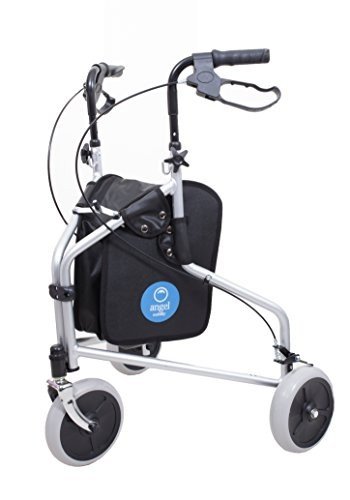Mobility Scooters: A Comprehensive Guide
Mobility scooters have actually become a necessary mode of transport for numerous individuals dealing with mobility difficulties. This post explores the various elements of mobility scooters, including their types, benefits, functions, and a guide for potential buyers.
Comprehending Mobility Scooters
Mobility scooters are electrically powered gadgets created for individuals with limited mobility. They provide a method of transportation for people who may have trouble walking however still wish to maintain their self-reliance. They are available in numerous designs and features to accommodate a wide variety of needs.
Types of Mobility Scooters
Mobility scooters can usually be categorized into three primary types:
| Type | Description | Best For |
|---|---|---|
| Compact Scooters | These are small and lightweight, perfect for inside and short journeys. | Users with restricted storage area or those who take a trip often. |
| Mid-size Scooters | A balance in between mobility and stability, ideal for both indoor and outside use. | Those who need to cover a range of surfaces. |
| Heavy-duty Scooters | Large and robust, created for rugged outdoor use and much heavier individuals. | Users requiring extra weight capability or going off-road. |
Key Features of Mobility Scooters
The option of mobility scooter frequently depends upon the functions that line up with specific needs. Here are a few of the essential functions to think about:
- Weight Capacity: Mobility scooters come with different weight limitations. It is crucial to select a scooter that can effectively support the user's weight.
- Variety: The distance a scooter can take a trip on a single charge differs. Depending upon user needs, one may choose scooters with a series of approximately 40 miles.
- Speed: Most mobility scooters can reach speeds between 4 to 8 mph. Consider what mobility scooters to buy is comfortable and safe for the designated environment.
- Turning Radius: A compact turning radius is important for indoor usage, permitting for simpler navigation in tight spaces.
- Battery Type: The kind of batteries utilized can affect the scooter's performance. Lead-acid and lithium-ion batteries are the most common.
Advantages of Using Mobility Scooters
The benefits of mobility scooters extend beyond simply transport. Some key advantages consist of:
- Independence: Users can navigate their environment without relying on caretakers, promoting self-reliance and self-confidence.
- Health Benefits: Using a scooter can motivate outdoor activity, resulting in physical and psychological health improvements by decreasing sensations of isolation.
- Convenience: Scooters can easily be run in different environments, whether inside, in shopping center, or outdoors.
Important Considerations When Buying a Mobility Scooter
When buying a mobility scooter, a number of considerations can assist ensure that you pick the ideal model:
Assess Individual Needs:
- Mobility level: Consider just how much help the person will require.
- Range of usage: Determine where the scooter will mostly be utilized (indoors, outdoors, on rough terrains, etc).
Test Drive:
- Always test drive a number of models to find an ideal fit. Take notice of convenience, ease of steering, and the scooter's responsiveness.
Review Safety Features:
- Look for scooters with appropriate safety features like lights, indicators, and anti-tip styles.
Examine Warranty and Service Options:
- A reputable service warranty and readily available service choices are essential for long-term use.
Frequently Asked Questions about Mobility Scooters
1. How fast do mobility scooters go?Mobility scooters generally have speeds varying from 4 to 8 miles per hour, with the majority of developed for safety instead of high-speed travel. 2. Are there weight limitations on mobility scooters?Yes, mobility
scooters come with particular weight limits, typically varying from
250 pounds to over 500 lbs, depending upon the design. 3. Can mobility scooters be used indoors?Certain designs, particularly compact scooters, are particularly developed for
indoor use and are easier to maneuver in tight spaces. 4. How often do the batteries need to be replaced?Battery life can differ based upon use, but usually, with correct care, batteries may last between 1 to 3 years before requiring replacement
. 5. Are mobility scooters covered by insurance?Coverage can differ, but some insurance coverage plans, consisting of Medicare and Medicaid, may cover part of the expense. It's suggested to examine with individual insurance service providers. Mobility scooters work as a
important tool for many people, allowing them to preserve
their liberty and self-reliance. By understanding the various types and functions of mobility scooters, individuals can make informed decisions customized to their particular requirements.
Whether utilized for errands, mingling, or leisurely activities, mobility scooters can enhance the quality of life for those with mobility constraints. Investing in a mobility scooter is a decision that can substantially impact an individual's day-to-day life. For that reason, people must thoroughly examine their alternatives and pick a model that best aligns with their way of life and mobility requirements
.

